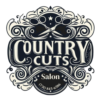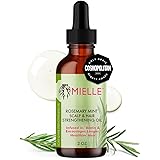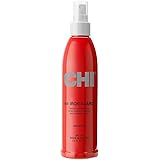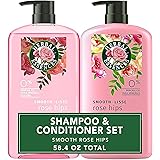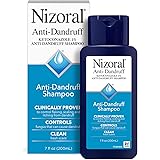Introduction to Hair and Photography
The fusion of hair styling and photography creates a dynamic synergy that significantly enhances visual storytelling. Hair, as an artistic medium, contributes not only to the aesthetic quality of a portrait but also plays a vital role in conveying a narrative or emotion. In photography, the attention to hair can transform a simple image into a striking visual statement, effectively drawing viewers in and prompting them to connect with the subject on a deeper level.
In the realm of contemporary photography, hairstyles have evolved to reflect changing trends and cultural movements. From elaborate updos to natural textures, the way individuals choose to present their hair can mirror societal influences and personal identity. As photographers increasingly recognize the importance of hair in their work, both stylists and photographers collaborate to create captivating compositions that tell compelling stories. The integration of hair styling into photography allows for an exploration of various concepts, ranging from glamour and elegance to raw authenticity and individuality.
This relationship between hair and photography is marked by a continuous evolution, with trends shifting to embrace new styles and techniques. Modern photographers often seek inspiration from diverse sources, whether rooted in historical references or contemporary subcultures. As hairstyles become a focal point within the frame, they reformulate the viewer’s interpretation of a photograph. Consequently, the significance of hair within the context of visual art cannot be overstated; it acts as a medium for expression, style, and culture, reflecting the unique relationship that exists between the person behind the lens and their subject.
The Art of Hair Styling for Photoshoots
When it comes to preparing for a photoshoot, the art of hair styling plays a crucial role in achieving stunning visuals. Professional hairstylists emphasize that the hair serves not only as an accessory but also as an essential element that can either enhance or detract from the overall composition of the final image. Various styles can dramatically impact how a subject is perceived in photographs, ranging from sleek and polished to voluminous and textured designs. Understanding these different techniques can significantly elevate the quality of the shoot.
A polished look often exudes professionalism and elegance, making it a favorable choice for corporate portraits or formal events. Techniques such as straightening, blow-drying with a round brush, and using products like smoothing serums can help achieve this finish. In contrast, voluminous styles can add dynamism and energy to photos. Utilizing volumizing mousse, teasing the roots, or using curling wands can create an eye-catching, textured appearance. Regardless of the desired look, attention to detail is key in hair preparation.
Moreover, it is important to consider hair health before a photoshoot. A well-prepared mane not only looks better but also photographs better. Professional hairstylists recommend conditioning treatments and regular trims leading up to a shoot. This preparation can help prevent frizz and split ends, ensuring that the hair maintains its desired shape and texture throughout the session.
In any photoshoot, collaboration is vital. Working closely with the photographer on how hair interacts with lighting and backgrounds can result in breathtaking imagery. By integrating these techniques and insights from professional hairstylists, one can appreciate the significant impact that careful hair styling has on the quality and aesthetic of photography.
Understanding Lighting and Its Effects on Hair
Lighting plays a crucial role in photography, particularly when it comes to showcasing hair. Its effects can significantly alter the way hair appears in images, impacting various attributes such as color, texture, and movement. Different lighting setups can either enhance the beauty of hair or diminish its visual appeal, making a strong understanding of lighting essential for photographers interested in capturing hair’s best qualities.
Natural light, often considered the most flattering option, offers a soft quality that can bring out the vibrancy of hair colors. When shooting outdoors during golden hour, the warm sunlight adds a rich glow to the hair, emphasizing its undertones and nuances. However, one must be cautious of overly harsh sunlight, which can create stark shadows and wash out colors, resulting in a less flattering appearance. To mitigate such effects, photographers should seek shaded areas where the light is diffused and even.
On the other hand, artificial lighting provides photographers with greater control over the intensity and direction of light. Techniques such as softboxes or ring lights can create a flattering diffusion, minimizing harsh shadows while still highlighting the texture and movement of the hair. This control allows for consistency across shots, particularly in studio settings where lighting can be manipulated effectively. Moreover, experimenting with backlighting can create a halo effect around the hair, making it appear more ethereal and enhancing its movement.
Ultimately, understanding the relationship between lighting and hair is essential for achieving stunning photographic results. By utilizing both natural and artificial lighting strategically, photographers can capture hair in a way that accentuates its color, texture, and fluidity, creating compelling images that truly reflect the beauty of their subjects.
Hair Colors and Their Photographic Impact
When it comes to photography, hair color can dramatically influence the overall aesthetic of an image. Different shades interact uniquely with light, affecting the subject’s visual appeal and mood. Understanding the effects of various hair colors through the lens of color theory is crucial for photographers aiming to create stunning visuals. For instance, warm tones, such as red or golden blond, tend to exude vibrancy and energy, while cool tones, like ash blonde or dark brown, often convey a sense of calmness and sophistication.
Highlighting techniques also play a pivotal role in showcasing hair colors in photographs. The application of strategic lighting can enhance or soften the hues, adding depth and dimension. Photographers often utilize the golden hour—shortly after sunrise or before sunset—when natural light softens shadows and enriches colors. This time is particularly advantageous for capturing warm-toned hair, allowing it to glow and stand out against a complementary backdrop.
Additionally, the use of contrast can significantly elevate how hair color is perceived in an image. A model with dark hair against a light background, or vice versa, will create a striking interplay that draws the viewer’s eye immediately to the subject’s hair. This technique not only amplifies the hair’s visual impact but also allows the photographer to evoke distinct moods and themes. For instance, high-contrast images can project drama and intensity, while softer contrasts might impart a dreamlike quality.
Trends in hair coloring continue to evolve, influenced by popular culture and fashion. For photography, these trends can provide a fresh perspective, allowing for thematic storytelling through various hair colors. Bold colors such as pastels or vibrant hues can convey playfulness, while more subdued, natural tones may reflect authenticity and intimacy. Incorporating these trends with an understanding of their photographic implications can lead to compelling images that resonate with audiences.
Hair Accessories: The Finishing Touch
In the realm of photography, hair accessories play a pivotal role in enhancing the overall aesthetic and visual storytelling of a portrait. Accessories such as clips, flowers, headbands, and barrettes can elevate hairstyles, adding texture, color, and interest to an image. The inclusion of these elements not only complements hair styling but also aligns with various photography themes, whether they are romantic, whimsical, or contemporary. Choosing the right hair accessory is essential in creating a cohesive look that resonates with the intended mood of the photoshoot.
For instance, floral hair accessories are particularly striking in outdoor photography, where nature provides a rich backdrop. Flowers can seamlessly integrate with a bohemian-themed shoot or a soft, romantic style, drawing attention to the model’s features while complementing their hair. Conversely, sleek metallic clips can enhance a minimalist aesthetic, accentuating the model’s hairstyle without overwhelming it. Similarly, headbands adorned with jewels or fabric can invoke a vintage feel, making them ideal for themed photoshoots that aim to evoke nostalgia.
When selecting hair accessories, it is vital to consider factors such as color, texture, and proportion in relation to the hairstyle and outfit. Accessories that contrast or harmonize with hair color can create stunning visual effects, while oversized elements can make a dramatic statement. Additionally, ensure that the accessory does not take away focus from the primary subject; the aim is to collaborate with the hairstyle to draw out the best overall image. Therefore, careful selection and consideration of hair accessories can profoundly influence the outcome of a photoshoot, making them the finishing touch that ties together the model’s look with the photographer’s vision.
Inspiration from Hair Photography Masters
Within the realm of hair photography, several artists stand out for their exceptional ability to capture the intricate interplay between hairstyling and visual aesthetics. These masters of the craft have not only redefined beauty standards but have also inspired countless individuals through their iconic works. Among them is the renowned hairstylist and photographer, Guido Palau, whose pioneering techniques blend avant-garde hairstyles with stunning visuals. His work often features bold color palettes and unconventional forms that challenge traditional perceptions of beauty.
Another influential figure is Richard Burbridge, known for his dramatic and emotive portraits. Burbridge’s unique approach involves creating a narrative through his images, highlighting the artistic potential of hair as a form of expression. In his striking photographs, hair becomes a central character, often symbolizing a deep emotional connection to identity and self-esteem. His collaboration with various stylists has resulted in some of the most memorable hair photographs in contemporary fashion.
Additionally, the works of Anton Corbijn have pushed the boundaries of hair photography, merging musician portraits with striking hairstyles, creating a fusion of art and music. His iconic black-and-white images often capture raw emotion while showcasing the intricate details of hairstyling, demonstrating how hair can influence the mood of the photograph.
The creative processes behind these masterpieces often involve extensive teamwork between hairstylists, photographers, and models. Meetings and brainstorming sessions are crucial, establishing a clear vision that merges hairstyling and photography into cohesive artistry. This collaboration fosters an environment where innovation thrives, resulting in hair photographs that not only highlight the skill involved in hairstyling but also resonate emotionally with viewers.
Ultimately, the synergy between stylists and photographers exemplifies the transformative nature of hair and photography. By drawing inspiration from these masters, aspiring artists can explore new creative avenues and reshape the visual narrative surrounding hair.
Behind the Scenes: Hair and Photography Collaboration
In the realm of hair and photography, a captivating photoshoot is often the culmination of meticulous teamwork and creative collaboration. This synergy unites hairstylists, photographers, models, and makeup artists, each contributing their unique expertise to achieve stunning visual outcomes. The collaborative nature of such projects emphasizes the importance of clear communication and effective planning, which are vital for ensuring that the vision is cohesively realized.
At the heart of successful hair photography is the hairstylist, who plays a pivotal role in designing and executing intricate hairstyles tailored to the theme of the shoot. Their skillful techniques and knowledge of current trends allow them to create looks that enhance the overall aesthetic. The photographer, on the other hand, must skillfully capture these hairstyles in a way that showcases their beauty, texture, and detail. This necessitates a deep understanding of lighting, angles, and composition, ensuring that the hair becomes a focal point within the photograph.
Collaboration among team members is essential in maintaining a fluid workflow. Pre-shoot meetings to discuss concepts, styling, and makeup choices promote clarity and address any potential challenges early on. Establishing a shared mood board can also be instrumental in aligning everyone’s vision. During the shoot, it is crucial for the hairstylist and photographer to communicate effectively about the desired angles and lighting conditions that will best highlight the hair.
Additionally, models should be briefed on the looks they will showcase to facilitate a seamless execution of poses and expressions. Tips, such as checking-in frequently and being open to feedback, can greatly enhance the collaboration, leading to successful and visually striking results. As each team member contributes their talent and perspective, the final product transcends individual efforts, resulting in something truly remarkable that reflects everyone’s dedication to the craft.
Post-Processing Techniques for Hair in Photography
Post-processing is a crucial step in the photography workflow, particularly when it comes to enhancing the visual appeal of hair in images. The intricate details and textures of hair can significantly influence the overall quality of a photograph. By employing various editing techniques, photographers can ensure that the hair stands out as a focal point, enhancing the subject’s features and contributing to the overall composition.
One fundamental technique is color correction, which allows photographers to adjust the hues and tones present in the image. This can involve fine-tuning the saturation and vibrancy to ensure that the hair color appears true to life. In some instances, manipulating the shadows and highlights can also help to create depth, giving the hair a more dimensional look. This attention to detail can make a substantial difference in how hair is perceived in the final image.
Retouching is another vital aspect of the post-processing phase. This may encompass removing stray hairs, smoothing out flyaways, or correcting any imperfections that may detract from the primary focus on hair. Specialized software often includes tools designed specifically for retouching hair, thus making it easier for photographers to achieve a polished result. Techniques such as frequency separation can also be utilized to selectively enhance specific areas of hair without affecting the surrounding skin.
Adding contrast is essential for making the hair pop against the background. By adjusting the overall contrast of the photograph, or selectively enhancing it in the hair region, photographers can draw attention to the texture and movement of hair, further enhancing its visual impact. Popular software used in the industry includes Adobe Lightroom and Adobe Photoshop, both of which offer a variety of tools aimed at hair enhancement.
In conclusion, mastering post-processing techniques plays a vital role in creating captivating hair photography. By utilizing color correction, retouching, and contrast adjustments while leveraging appropriate software, photographers can transform their images, ensuring that the hair elements are brought to the forefront of the composition.
Conclusion
In the realm of visual storytelling, the relationship between hair and photography is undeniably significant. Throughout this blog post, we have explored various aspects of this partnership, from the way hair contributes to a subject’s overall aesthetic to its ability to convey emotion and narrative within an image. Hair serves as a powerful tool in the hands of photographers, enabling them to create mesmerizing portraits that resonate with viewers on multiple levels.
The evolution of hair and its styling techniques has continued to parallel advancements in photography, revealing a dynamic interplay between these two artistic forms. Just as cameras and photographic styles have transformed over time, so too have trends in hair, reflecting cultural shifts and individual expression. This synergy invites both photographers and subjects to experiment with hairstyles as a means to enhance visual impact and deepen storytelling elements.
Moreover, hair can convey personal identity, mood, and environmental context. Photographers who adeptly harness the styling of hair in their compositions have the opportunity to create images that are not only visually appealing but also rich in narrative depth. From editorial shoots to wedding photography, the careful consideration of hair’s role can elevate an image, making it both memorable and evocative.
As we conclude this exploration of the enduring relationship between hair and photography, we encourage readers to embrace experimentation in their own visual endeavors. Whether in a professional setting or a personal project, recognizing the expressive power of hair can lead to stunning results. By integrating unique hairstyles into your photography, you can enrich your artistic expression and enhance the storytelling potential of your images. In this vibrant dialogue between hair and photography, new artistic possibilities await, ready to be explored.
